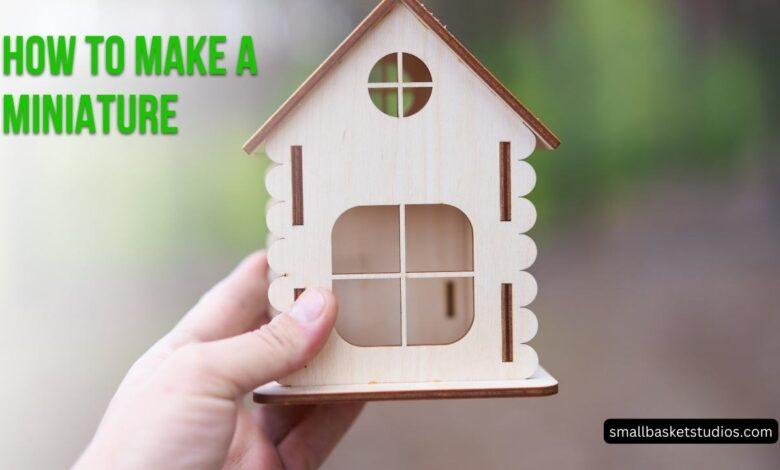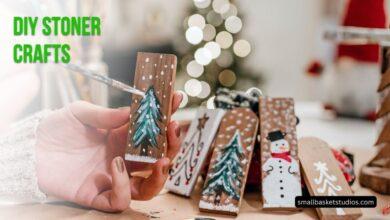How to Make a Miniature: A Step-by-Step Guide for Beginners

Miniature crafting invites big imagination, transporting artists into tiny, intricate worlds of their own creation. From dollhouses to fairy gardens, model train layouts to fantasy gaming dioramas, this intricate art form entices hobbyists of all ages and skills. With the right tools and techniques, anyone can manifest mini worlds brimming with magic and possibility. This comprehensive guide illuminates fundamentals for beginners to start building their own imaginative miniatures.
How to Make a Miniature
The Captivating Charm of Miniatures Miniatures encapsulate the phrase “good things come in small packages”, distilling inspiration into petite proportions. Figurines scaled down to 1:12 ratios gain intricate charm and collectability. Model structures capture iconic architecture and decoration in palm-sized replicas. Tiny still life vignettes or tabletop gaming sets tell vivid stories despite diminished size. Like life in tilt-shift perspective, miniatures bring joy by making the everyday unexpectedly novel.
But mini-making requires equal parts patience and precision. Steady hands, keen eyes and imagination fuel success. Understanding basics before tackling specialized advanced builds allows polishing fundamental skills first. With the right studiospace setup and quality toolkit on hand, beginners can smoothly navigate early learning curves on a path toward incredible creations.
Building Your Miniature Workspace
While basic builds require little space, investing in a dedicated workstation makes project construction easier plus enables storage and organization. Consider key elements:
Lighting – Well lit desks facilitate highly detailed tasks without eye strain. Optimize visibility with:
- Daylight Bulbs – Natural light tones without glare
- Magnifying Lamp – Multi power magnification for ultra fine work
- Task Lighting – Bright supplemental illumination on the project
Storage – Tiny parts demand copious organized storage to avoid losses. Try:
- Sorting Trays – Categorize pieces, adhesives, tools
- Clear Containers – Visibly identify beads, hardware, accessories
- Cabinet Space – Deep drawers for works-in-progress
Most importantly – set up an inspiration zone. Surround workspace with motivating photos, existing miniatures as exemplars, color palettes, sketches or reference material to stimulate creativity.
Equipping an Essential Toolkit
Quality basic tools ready every step while advanced collectors merit specialty items. Start with:
Hand Tools – For measuring, cutting, shaping
- Rulers – Metal edges provide straight lines
- Scissors – Sharp nippers in multiple sizes
- X-acto Knife – Carve clean contours and edges
Adhesives – Affixing elements securely
- White Glue – Non-toxic all-purpose bonding
- Hot Glue Gun – Instant adhesion for tricky materials
- Double-Sided Tape – Position items neatly
Paints + Finishes – Building realistic surfaces
- Acrylic Paints – Fast-drying, non-toxic, mixable color
- Artist Brushes – Precise pointed tips for wee details
- Clear Top Coats – Protect paint between handling
With organizational habits instilled via customized storage and a quality starter toolkit equipped, new miniaturists can begin manifesting exciting projects.
Choosing Your First Miniature Project
An eclectic array of ready-to-assemble kits, 3D build plans and individual miniature elements make narrowing first options tough. From historic model railways to exotic fairy gardens, beginners benefit sticking with easily achievable projects first before advancing.
Great First Miniatures Include:
Printable Paper Models
Instant beginner gratification! Download printable templates online offering everything from vintage shopfronts to Haunted Mansion replicas. Follow guides to cut, fold and glue printer pages into impressive 3D models resembling intricate builds…with no carving or painting!
Polymer Clay Creations
Another fast, forgiving material, polymer clay requires simple baking to set. Shape fantastical figurines, food items or dimensional build accents via molding, carving and hand-mixing color pigments.
Basic Dollhouse Furniture
Affordable unfinished wood dressers, beds, chairs and tables allow practicing essential skills like painting, staining, aging techniques and hardware installation while improving tool handling.
Found Object Assemblages
Repurpose buttons, beads, marbles, seashells and other items as miniature elements. Glue finds onto bases sculpting vignettes, jewelry or quirky characters.
Containers and Shadowboxes
Recycle trinket boxes, jars, frames and more as settings for diorama displays. Build up layered interior scenery then arrange tiny objects to create imaginative worlds under glass.
By starting simply, core competencies cement strong foundations for eventually tackling more intricate builds as abilities progress. Don’t forget to document the process to showcase completed works!
Photographing Miniature Creations
Whether intended for artistic display or entering competitive exhibits, quality photos spotlighting miniatures’ splendid detail become easy with a few tricks:
- Use Macro Mode – Phone cameras toggle this setting for ultra-closeups
- Diffuse Light – Eliminate glares and shadows with lamp positioning
- Plain Backdrops – Crisp matboards prevent visual distractions
- Multi Angles – Showcase dimensionality with wide/overhead options
- Props Tell Stories – Add tiny complementary elements implying vignettes
With some trial and error, lighting tweaks and external lens attachments, stunning images amplify hard work down to the tiniest flourish for sharing with fellow miniaturists online or independently selling custom creations.
Inspiring Advanced Exploration
As confidence in fundamental skills builds, consider branching into more complex mediums:
Polymer Clays – Sculpt intricate figurines, realistic food or landscape elements by mixing custom colors, textures and using acrylic paints for detailing. Craft intricate jewelry pieces, chess sets and more.
Model Structures – Laser cut kits, 3D printed builds and hand cut craftwood sheets allow assembling ultrarealistic buildings, bridges, scenery and architectural wonders to scale.
Dioramas – Design immersive environments inside shadowboxes, jars, suitcases or acrylic display cubes. Worldbuild tiny scenes then decorate with scenery elements, LED lights and figurines. Possibilities stay endless!
The joy of miniatures lies not in finishing quickly but slowly improving finesse over years of practice. Growth unfolds through studying professional builders, acquiring advanced tools and persisting through trial and error creative phases. But wonders take shape with that first blank canvas, chunk of clay or unassembled kit. So grab essentials, clear workspace and let imagination shrink big inspiration down to size!
Frequently Asked Questions
What basic tools do I need for miniature and model making?
Start with essentials like sharp nippers, straight edge rulers, quality paintbrushes, needle nose pliers, tweezers, adhesives and acrylic paints matched with proper storage for organizing all the tiny components.
How do I photograph miniatures to best showcase detail?
Use macro cell phone camera functionality, diffuse overhead lighting, pick non-distracting backdrops and grab multiple angles including close-ups. This highlights intricacy.
What beginner projects help me learn crucial techniques?
Great starter mediums allowing fundamental practice include papercraft build kits, polymer clay, basic dollhouse furniture pieces, repurposed found object assemblages, containers and shadowboxes.
Can someone new to crafting pick up miniature making easily?
With proper organization, workspace setup, starter toolkits and easy build plan choices, miniature crafting makes highly engaging, rewarding introductory creative skills accessible for total beginners. Patience and practice set up success.
How do I progress from beginner to advanced miniature artist?
Challenge skills by slowly acquiring specialized tools for trickier mediums like intricate polymer clay sculpting, laser cut model structures or multi-layered dioramas. Study experts for inspiration while persisting through trial and error creative phases.
The magic happens shrinking imagination down to Lilliputian scale. Miniature worlds reveal big creative potential requiring only enthusiasm and wonder from artists willing to think small. Follow fundamental guides to unlock a lifetime of Tiny rewards.




